Travel to Longyearbyen, Svalbard, Norway
Jun 26
Travel through Oslo, Norway en route to Longyearbyen, Svalbard, Norway. This charming Arctic town serves as the gateway to the wonders of the Svalbard Archipelago.
Experience small ship expedition travel, cruising through Norway’s Arctic, illuminated by the midnight sun, to witness the legendary polar bear in its natural habitat. This polar adventure takes you to the famed Svalbard Archipelago, located between the North Pole and Norway, home to one of the largest polar bear concentrations on Earth. This region remains wild and pristine with its vast mountains, dramatic fjords, massive glaciers, and picturesque icebergs coupled with iconic Arctic wildlife. The primary mission of expedition leader and photographer Milo Burcham is to share with you the raw beauty of the high Arctic world and the unique wildlife that inhabits this region, and for those interested, also provide you with skills and opportunities to produce quality images of unique Arctic wildlife and beautiful landscapes.
⭐⭐⭐⭐⭐ “The trip was very well managed from start to finish. Accommodations and food were good. The boat was very comfortable. The guides were highly skilled, warm, and always open to helping with photography. The crew was great. The wildlife experiences were what I had hoped for and the scenery was more striking than I had expected. I came away learning new things, making some new friends, and looking forward to future adventures with Cheesemans’.” – Jennifer Black |
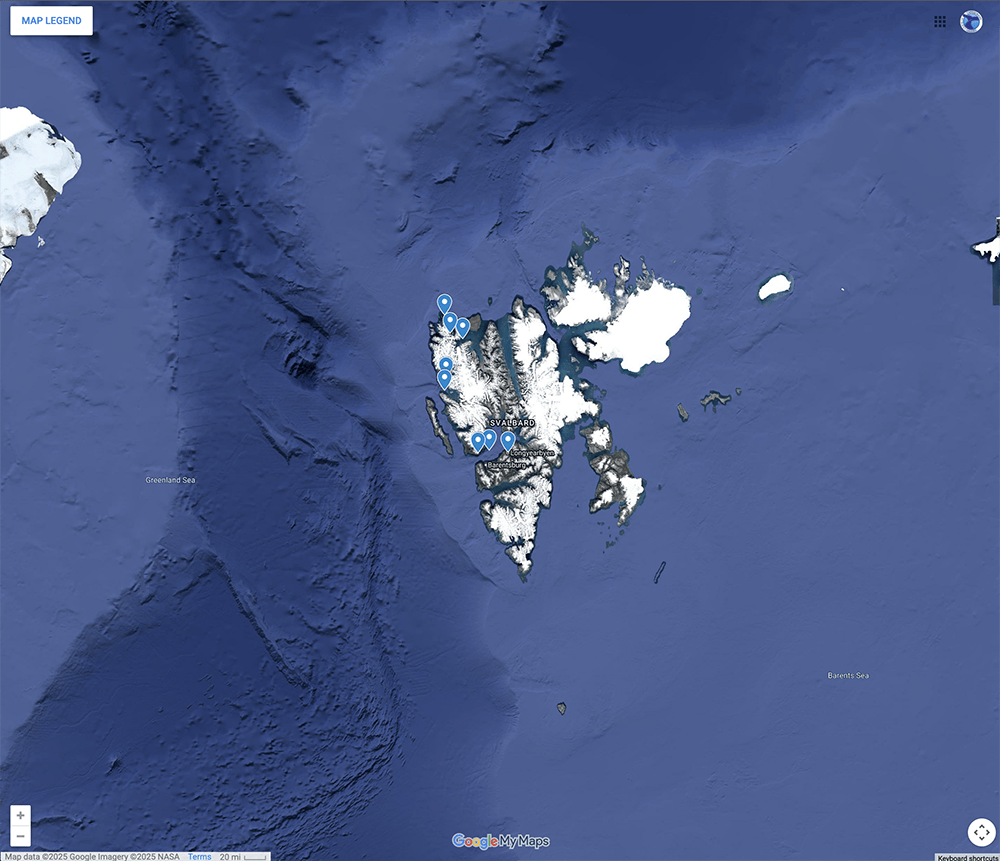
| Date | Description | Lodge | Meals |
|---|---|---|---|
| Jun 26 | Journey to the Arctic. Travel to Norway. | ||
| Jun 27 | Longyearbyen Arrival. Explore a northern Arctic town, Longyearbyen, Svalbard, Norway. | Radisson Blu Polar Hotel Spitsbergen, Longyearbyen | |
| Jun 28 | Expedition Begins. Embark on the ship in Longyearbyen. | Aboard the ship | B, D |
| Jun 29-Jul 7 | Arctic Odyssey. Voyage throughout the Svalbard Archipelago with Zodiac cruises and landings for unbelievable Arctic photography and sightings of ice, landscapes, and wildlife. | Aboard the ship | B, L, D |
| Jul 8 | Farewell to the North. Disembark in Longyearbyen for flights homeward | B | |
| Jul 9 | Arrive home. |
Milo is a seasoned wildlife biologist with a lifelong passion for animals, having worked extensively with bears, moose, and elk, while maintaining a keen interest in all forms of wildlife—from birds to reptiles. An accomplished wildlife photographer for over 40 years, his work has been featured in National Geographic, Audubon, Time, and Ranger Rick. Based in Cordova, Alaska for more than two decades, Milo brings a deep understanding of Arctic and Antarctic environments and has guided expeditions to both Svalbard and Antarctica for Cheeseman’s since 2023. When not guiding, he enjoys outdoor pursuits such as hiking, backcountry skiing, wild ice skating, fishing, and traveling to remarkable wildlife destinations.
Travel through Oslo, Norway en route to Longyearbyen, Svalbard, Norway. This charming Arctic town serves as the gateway to the wonders of the Svalbard Archipelago.
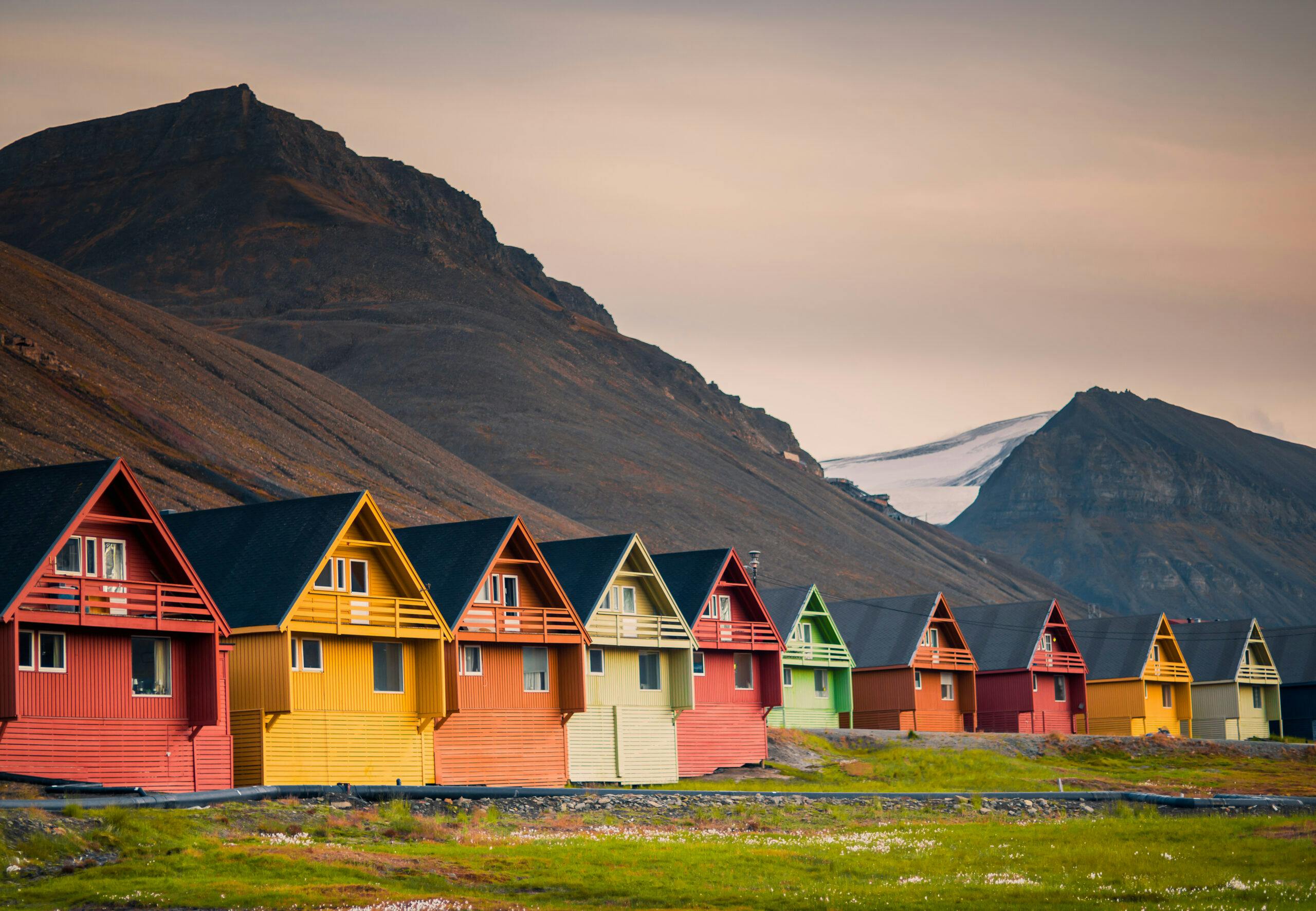
Arrive in Longyearbyen, Svalbard, Norway, for an overnight stay before boarding the ship the next day.
Longyearbyen is a Scandinavian town situated on Spitsbergen, the largest island in the Svalbard Archipelago. Three other small settlements on Spitsbergen include another 1,000 people with most in the Russian settlement of Barentsburg. The rest of the 62,000 square kilometers of Spitsbergen and the remainder of the archipelago, are incredible Arctic wilderness. While walking around Longyearbyen, you’ll be surrounded by tiny wildflowers beginning to bloom, and may encounter various wildlife. Birdlife is abundant, with sightings of Svalbard Ptarmigan and Snow Buntings nesting on the outskirts of town and coastal nesting species like Common Eiders, Parasitic Jaegers (Arctic Skuas) and Arctic Terns nest along the coastal flats adjoining the town.
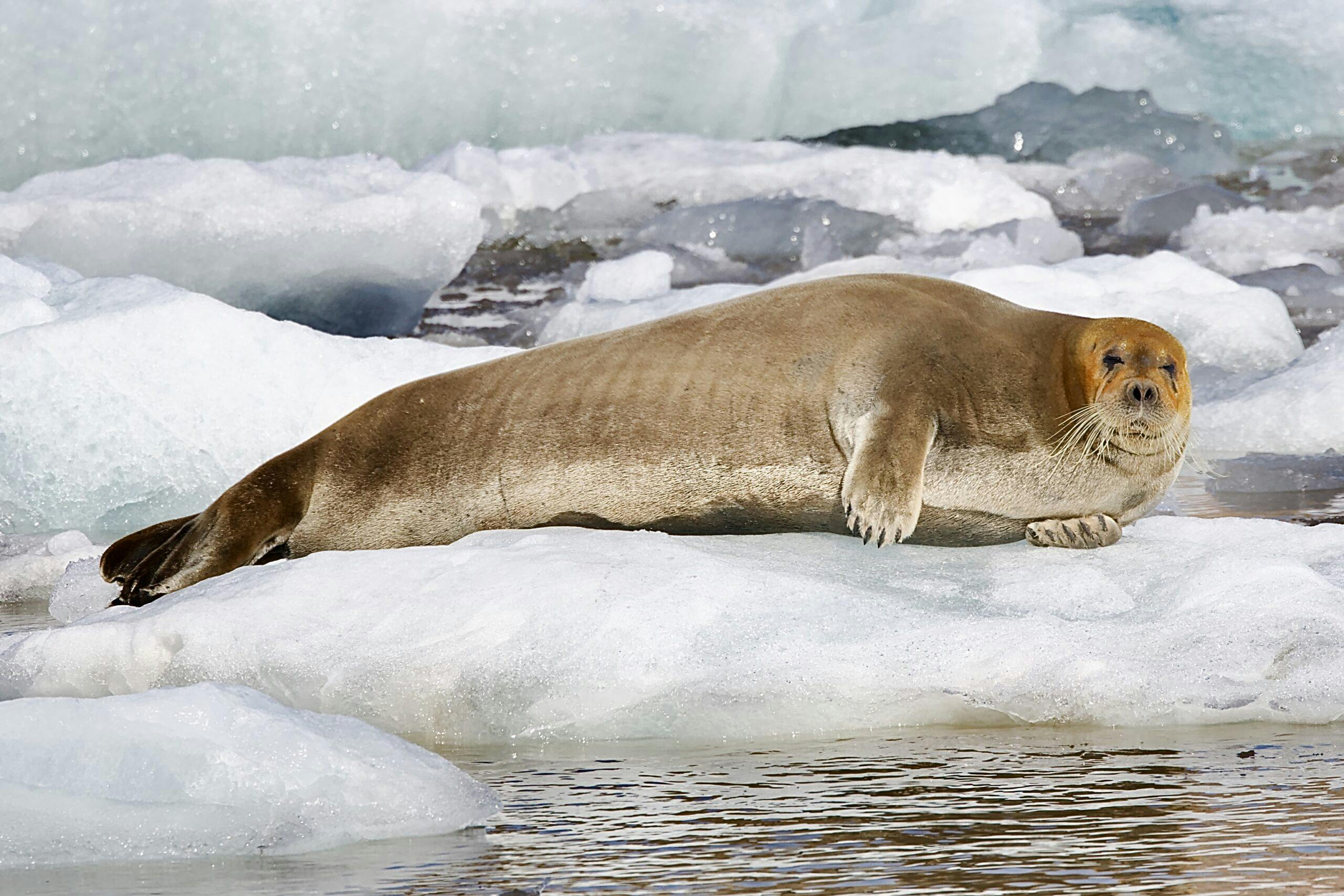
Today you can choose to do some last-minute shopping, visit the excellent museum next to the Radisson Blu Hotel, explore the shore for birds, or take a side trip to other locales along the coast of Isfjorden. In the late afternoon, board the expedition vessel that will be your base for the upcoming Arctic exploration.
As the ship sets sail, take in views of the surrounding mountains and glaciers. The waters around Svalbard are relatively calm, making for a comfortable voyage. Thanks to the Gulf Stream, Svalbard’s climate is milder than its latitude suggests. The flexible itinerary is designed to adapt to changing weather and sea ice conditions, ensuring the best possible wildlife encounters and landscape explorations.
We emphasize photography and observation of iconic Arctic wildlife and unique and beautiful landscapes, complying with local regulations regarding wildlife sightings in Svalbard. Our small group size allows us to be patient and respectful observers, ensuring you have ample time to capture the perfect photographic moment while always prioritizing wildlife welfare and maintaining a safe, disturbance-free distance.
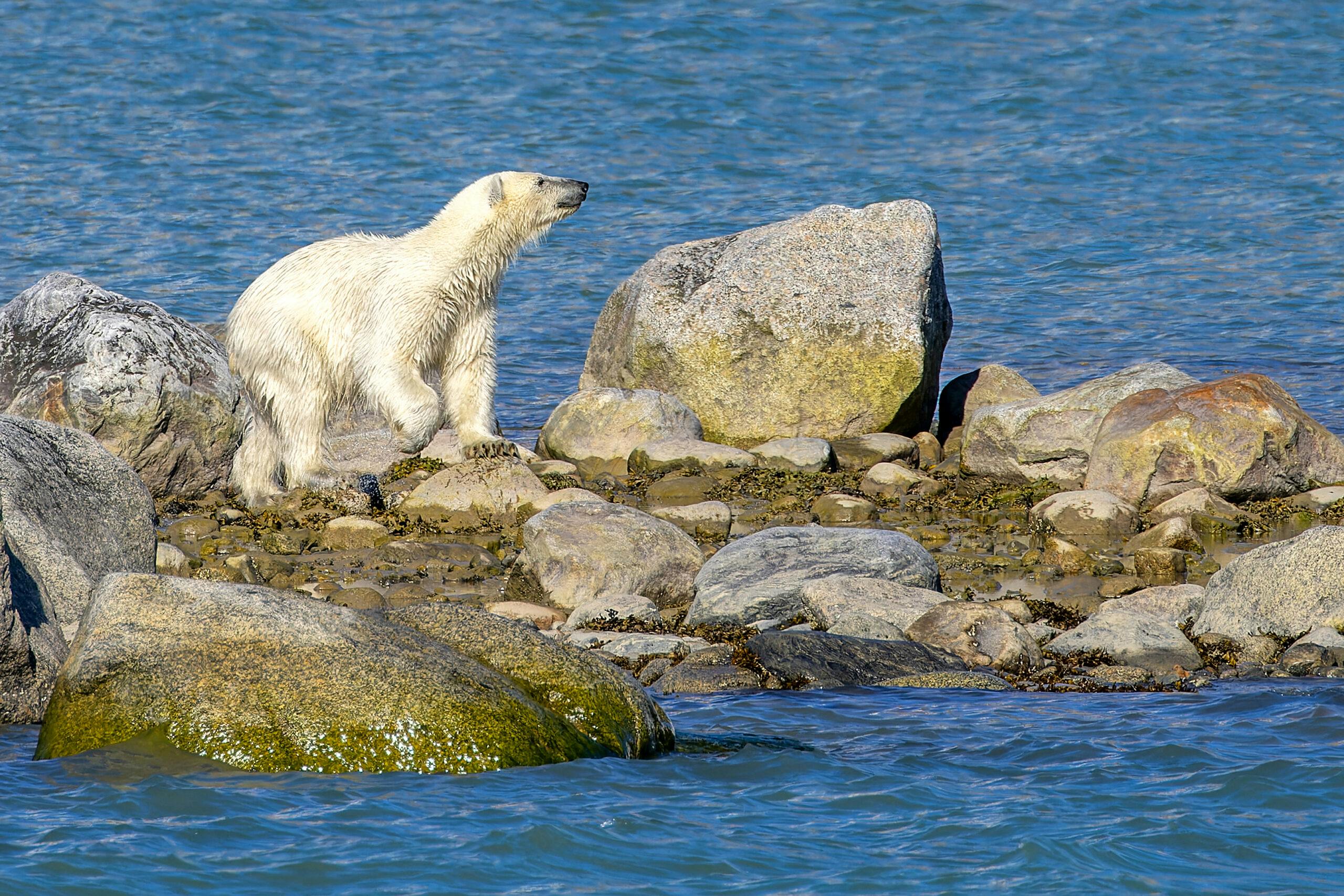
For the next nine days, navigate through some of the most remote and beautiful areas of the Arctic. The constant glow of the Midnight Sun allows for extended exploration and prime opportunities for photography. Each day brings new possibilities, including Zodiac cruises through ice-strewn waters, landings on untouched shores, and wildlife viewing from the ship’s observation decks.
As you venture deeper into the archipelago, you’ll watch for wildlife from polar bears to walruses. Seabird cliffs bustle with life, featuring species like Black-legged Kittiwakes, Northern Fulmars, Dovekies, Thick-billed Murres, and Atlantic Puffins. In the fjords, ringed and bearded seals haul out on floating ice, and you’ll spot various whale species gliding through the cold, clear waters.
On land, hikes across the tundra reveal another dimension of Svalbard’s ecosystem. Svalbard reindeer, recognizable by their short legs and stocky build, graze on the summer vegetation, while arctic foxes stealthily roam in search of food. Birdwatchers will delight in seeing Pink-footed Geese, Barnacle Geese, King Eiders, and nesting shorebirds like Red Phalaropes and Arctic Terns. Geology enthusiasts will appreciate the vibrant rock layers that expose the island’s ancient past.
A note about Norwegian geography terms (as seen in many of the following place names): “bukta” means bay, “sund” means sound, “sundet” or “stretet” means channel or strait, “øy” or “øya” means island, “landet” means land or country, “breen” means glacier, and, of course, “fjord” or “fjorden” means fjord or inlet.
Liefdefjorden
Cruise into Liefdefjorden to witness the impressive ice face of Monacobreen Glacier. Polar bears frequently roam the fjord, scavenging along the shoreline, while flocks of kittiwakes gather at the glacier’s edge to feed in nutrient-rich waters.
Raudfjorden
Located along Spitsbergen’s northern coast, Raudfjorden captivates visitors with its dramatic glacier fronts and lush tundra. The fjord’s sheltered waters are a haven for ringed and bearded seals, as well as diverse seabird colonies.
Ytre Norskøya
Step ashore on Ytre Norskøya, where colorful lichens blanket rocky cliffs and seabirds nest in abundance. This island’s elevated trails offer panoramic views, ideal for both photography and quiet appreciation of the Arctic’s serene beauty.
Krossfjorden and Kongsfjorden
Explore two of Svalbard’s most picturesque fjords. Glide past the Fourteenth of July Glacier (Fjortende Julibreen), where you’ll encounter waterfalls cascading from the ice and see seabirds nesting on surrounding cliffs. Continue to Lilliehöökbreen, a massive glacier stretching 22 kilometers.
Alkhornet
At the mouth of Isfjorden, the largest of all Spitsbergen’s fjords, is this prominent cliff. You may land to look for arctic foxes searching the cliff base for fallen birds. Svalbard reindeer are attracted to the luxuriant wildflower-covered vegetation, creating some of the best reindeer photography in the archipelago.
Arrive back in Longyearbyen around 9:00am where you’ll disembark and either be transfer to the airport or into town, if you depart later in the day.
We chose the most well-equipped and comfortable vessel in the small ship class to ensure an exceptional experience. This ship offers both comfort and rugged capability, ideal for travelers seeking intimate exploration with top-tier amenities. Its ice-strengthened hull and shallow draft allow access to channels and inlets larger ships simply can't reach. These features enable rare wildlife encounters and amazing photo opportunities in remote, less-traveled areas.
A fleet of sturdy Zodiacs takes you ashore and into narrow bays for close-up exploration. Guides launch these boats quickly for flexible, safe, and exciting off-ship adventures. Wildlife viewing thrives on the large, dual-level observation deck positioned perfectly at the bow. You’ll spot whales, seabirds, and glaciers in comfort, thanks to the ship’s stable and open viewing areas. Inside, you’ll enjoy panoramic views through large windows in the social lounge and dining areas.
The spacious lounge invites you to relax, edit photos, and attend talks by our expert naturalist guides. After excursions, guests often gather here to share stories, learn, and review the day’s experiences. Each guest stays in a private lower-deck cabin or shared main-deck cabin with private bathroom facilities. Cabins are cozy, quiet, and well-designed for comfort throughout the voyage.
Only twelve passengers join each departure, creating a personal and peaceful expedition. Small group travel allows more time ashore, better wildlife experiences, and a closer connection to nature. This ship explores quiet, hidden places far from commercial cruise routes. You’ll find the experience deeply rewarding, both in scenery and in connection with fellow travelers. Expect exploration, comfort, and close-up access that large ships simply can’t deliver. Every element—ship size, expert crew, and flexible itinerary—makes this voyage ideal for adventurous nature lovers.
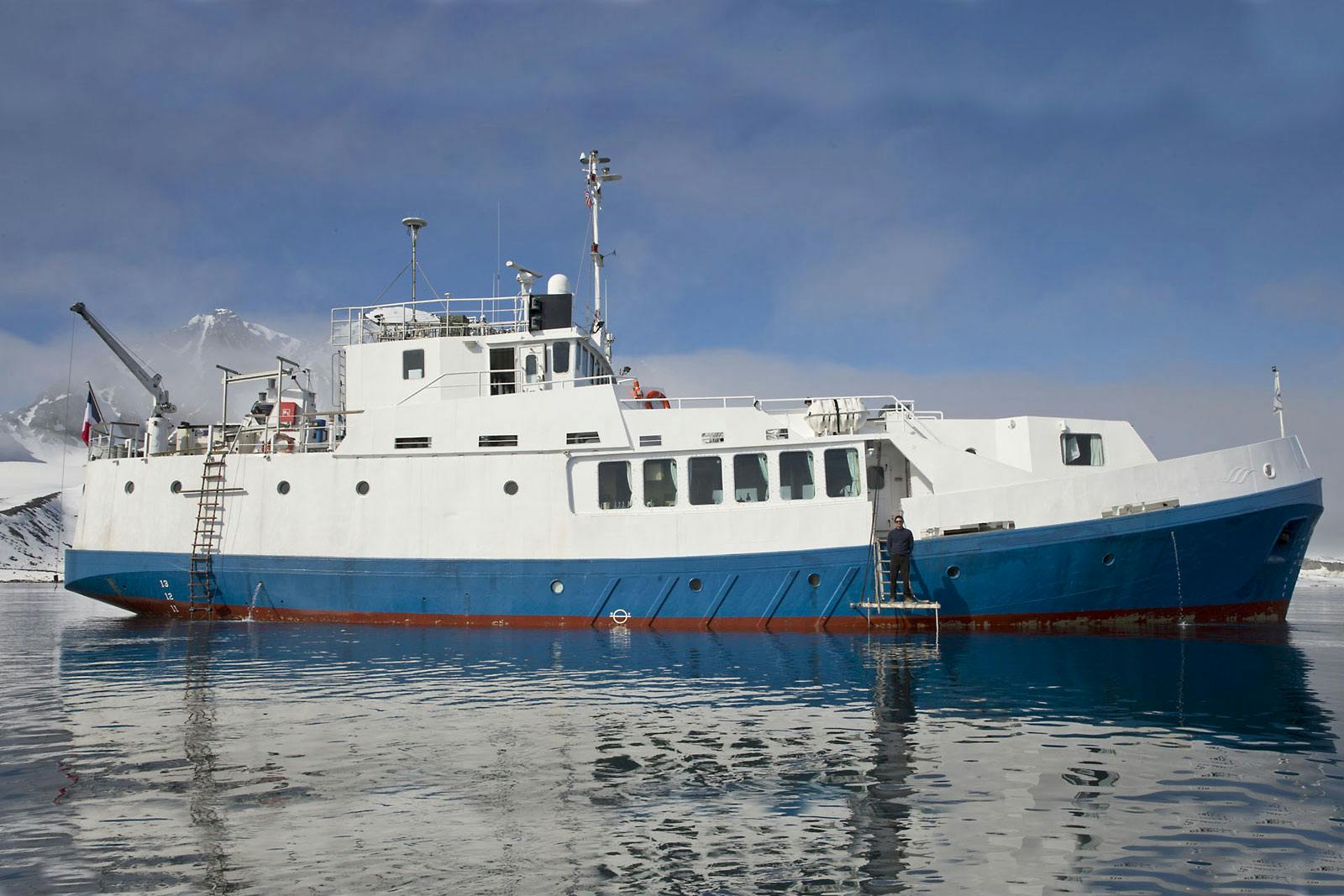
| Type | Cost Per Person |
|---|---|
| Trip Cost, single occupancy on lower deck* | $15,400 |
| Trip Cost, double occupancy on main deck | $15,400 |
| *Single occupancy aboard the ship, but double occupancy at Longyearbyen hotel. |
Costs are per person, single occupancy for lower deck cabins and double occupancy for main deck cabins, not including airfare. See Included and Not Included sections for more details.
If you are a single traveler, we will find a roommate for you at the hotel in Longyearbyen, but if we cannot find you a roommate, we may charge you a single supplement. If you prefer a single room for your included night in the hotel, it costs the same as an additional night and is subject to availability.
We cannot guarantee a specific cabin number, but if changes occur, we will assign a cabin of equal or greater value.
| Payment | Due Date | Amount Per Person |
|---|---|---|
| Deposit | Due now to reserve your space | $6,000 |
| Final | January 17, 2026 | Remaining Balance |
Payments are due based on the schedule above. All reservations require a deposit to confirm reservation of your space.
Refunds are given depending on the time left before departure according to the following table. The cancellation fee of $300 per person can be applied toward another trip if reserved within six months of the cancelled trip’s departure date. Cancellations are non-transferrable.
| Dates | Forfeited Amount per Person |
|---|---|
| On or before November 16, 2025 | $300 |
| November 17 to December 16, 2025 | 10% of trip cost |
| December 17, 2025 to January 16, 2026 | 40% of trip cost |
| On or after January 17, 2026 | 100% of trip cost |
You will visit the Arctic during its summer with 24 hours of daylight. Weather patterns may be highly variable, so bring appropriate attire and gear to handle a mix of conditions including wind, snow, rain, and sun. Expect temperatures in the 40s°F (4 to 8°C) during the day and in the 30s° (0 to 4°C) at night, but weather fronts can cause temperatures to either drop further or rise to the 50s and low 60s°F (10 to 17°C).
You must be able to get in and out of the Zodiacs, from the ship, via a six-foot ladder with staff assisting above and below you. Once ashore, you must be also able to get in and out of the Zodiacs onto the beach. You’ll have opportunities for a range of activities from easy, short hikes to longer, more vigorous hikes for those interested. Please contact us if you have any health concerns that may make this trip challenging.
Detailed logistical information is included in the Trip Planning Materials we will send you.
Flights you book
With only twelve passenger cabins, our ship is smaller than most ships in Svalbard, allowing you to travel farther into smaller inlets than other ships. Our small group size gives you the flexibility to seize the moment and enjoy special wildlife encounters. With two leaders and only twelve passengers, you will receive plenty of individual attention. And, with two Zodiacs, you have plenty of room for you and your photography gear.
June and July represent the peak months of the short but incredibly productive Arctic summer in Svalbard. In addition to polar bears, it is during these months we see a peak of summer animal activity including the amassing of significant bird colonies, the beginning of the short season of wildflower blooming, the potential to discover arctic fox families with their new pup additions, and ice-free access to various walrus haul out locations. It is also during the short summer that the pack ice breaks up enough to allow further exploration of the far north fjords and coastline that is otherwise inaccessible due to ice during the winter and early spring months.
Because our two expeditions visit the archipelago back-to-back, spanning four weeks, your wildlife encounters will not vary much, but the July expedition may have slightly more opportunities for wildflowers and less ice.
As of January 1, 2025, Norway has introduced stricter environmental regulations to protect Svalbard’s Arctic ecosystem. Key changes include limiting landings to 43 designated sites, enforcing stricter drone usage, reducing speeds near wildlife, and increasing wildlife viewing distances (e.g., 300–500 meters for polar bears, dependent on the time of year). Small-ship expeditions like ours, with just 12 guests, can still access all permitted sites. These rules ensure meaningful exploration while safeguarding the region’s fragile environment.
The updated measures reduce stress on wildlife, protect sensitive habitats, and prioritize low-impact travel. Restrictions on speed, sea ice navigation, and onshore activities help preserve Svalbard’s pristine wilderness. Our conservation-focused approach already aligns with these standards, ensuring visitors experience the Arctic’s untouched beauty while contributing to its long-term protection.
Don’t let a fear of motion sickness keep you away! Even those who have experienced seasickness reported that the incredible wildlife and overall experience were well worth the temporary discomfort. If you are susceptible to seasickness or are concerned that you might be, please come prepared! The key to avoiding seasickness is to act before you experience nausea. Do your own research and consult your doctor before taking any medications. A good night of sleep, eating well, limiting alcohol, and using your favorite seasickness remedy is sufficient for most travelers. Find more information on our Coping with Seasickness webpage (this information is applicable to any form of motion sickness) and contact us if you have any questions.
Our company ethos has always regarded conservation as inseparable from responsible tourism. We struggle with the dilemma that traveling worldwide expends climate-changing carbon. However, we wholeheartedly believe that traveling with us will cultivate your passion for conserving our beautiful world while stimulating each destination’s local economy. We encourage you to explore the various ways in which Cheesemans’ operates within this context:
Read our current Terms and Conditions.
 Milo Burcham
Milo Burcham